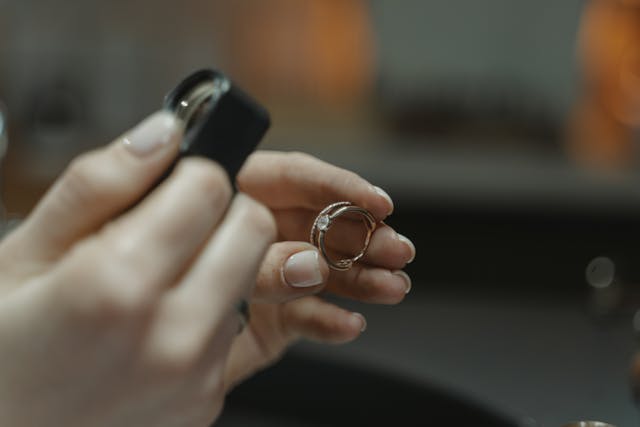Have you ever considered that the glittering jewels that adorn your fingers or hang around your neck could be more than just accessories, but a wise financial investment? Beyond the sparkle and allure of jewelry, there lies a potential gold mine for savvy investors. But what makes a piece of jewelry not only a feast for the eyes, but also a valuable asset in your investment portfolio?
In this exploration of jewelry as an investment, we delve into the art of choosing pieces that not only hold value, but can also hold their value over time, delivering a potentially lucrative return on investment. With a focus on understanding value retention, assessing quality and authenticity, and choosing the right types of jewelry to invest in, we will discover how this radiant market can offer more than just aesthetic pleasure, but also strategic financial gain.
Jewelry as an investment
Investing in jewelry goes beyond aesthetics; it can also be a smart financial move. When you know how to choose pieces that will hold value and prove to be authentic, you pave the way for a potentially fruitful investment.
Understanding value retention
Materials: The materials used in jewelry have a significant impact on its ability to retain value over time. Here’s a snapshot:
|
Material |
Characteristics | Value retention |
|---|---|---|
| Gold | Durable, classic | High |
| Platinum | Rare, strong | Very high |
| Diamonds | Timeless, much in demand | High |
| Gemstones | Variability in value | Depending on rarity and quality |
Factors such as brand reputation and historical significance can further enhance a piece’s long-term value. Limited editions or pieces from renowned designers such as Cartier or Tiffany & Co. often have a premium that can increase over time.
Market demand: As with any investment, market demand is unpredictable, but plays a crucial role. Pieces that are universally sought after, such as diamond engagement rings, tend to hold their value better due to consistently high demand.
Assessing quality and authenticity
Quality: The quality of the jewelry you invest in is paramount. Always look for pieces with:
- Beautiful craftsmanship
- High-quality materials
- Timeless design
Inspecting for hallmarks and engravings can give you information about the purity of the metal and the authenticity of the piece.
Authenticity: Guaranteeing authenticity is crucial when investing in jewelry. You should:
- Obtain certifications (e.g. GIA for diamonds)
- Use trusted dealers with a verifiable reputation
- Consider appraisals from independent, certified gemologists
Remember, documentation verifying the authenticity and quality of your jewelry not only provides peace of mind, but also serves as proof of value if you decide to sell in the future.
Types of jewelry to invest in
When choosing jewelry as an investment, focus on pieces that have inherent and lasting value. This often comes down to the materials they are made of and their historical significance.
Diamonds and gemstones
Investing in diamonds and gemstones such as sapphires, emeralds or rubies can be a wise choice because of their timeless appeal and durability. Look for high-quality pieces with certificates of authenticity verifying their quality and value. The 4Cs – cut, clarity, color and carat weight – are crucial in determining the value of a diamond. For other gemstones, their origin, color saturation and transparency are important value factors.
- Snee: Affects brilliance and fire
- Brightness: Indicates purity
- Colour: Rarer colors fetch higher prices
- Carat weight: Measure the apparent size
Gold and platinum pieces
Gold and platinum are highly sought after metals due to their rarity and resistance to tarnish. They hold their value well and are easy to liquidate. The value of gold and platinum jewelry is based in part on the current market prices of the metals.
- Gold: Often rated by carat purity (24K, 18K, 14K, etc.)
- Platinum: Heavier and often more valuable than gold
For both, craftsmanship and brand can significantly increase value. Make sure you buy jewelry with a hallmark, which indicates the exact purity of the metal.
Vintage and heirloom collections
Vintage and heirloom jewelry is as much about their history as it is about their construction. Look for items that are at least 30 years old and are considered vintage. Pieces with a storied history, or those from a sought-after era such as the Art Deco period, can be particularly valuable.
- Origin: Documentation that proves history can increase value
- Condition: Well-preserved pieces are more desirable
Always have vintage and heirloom pieces appraised by a reputable expert to determine their market value.
Strategies for Investing
Investing in jewelry requires smart tactics to balance the sparkle of instant gratification with the steady glow of long-term profits. Here’s how to shine in the field of glittering assets.
Long-term holdings versus short-term trading
Long-term holding and short-term trading represent two different approaches to handling valuable pieces.
Long-term holding is a patient art of acquiring items that are expected to increase in value over the years or decades. This method is particularly suitable for those looking for stability, as jewelry with historical significance or from prestigious brands tends to steadily grow in value. It also appeals to those who value emotional significance, allowing for the creation of heirlooms that combine personal sentiment with financial acumen.
On the other hand, short-term trading targets individuals with market knowledge and the ability to predict trends, allowing them to buy and sell jewelry for a profit within shorter time frames. Adaptability is crucial in this approach, as it allows rapid adjustments to market fluctuations, allowing for short-term opportunities to be taken advantage of.
Diversification and portfolio management
Diversification and portfolio management are key strategies in investing, where jewelry adds a unique and valuable dimension.
Achieving the right mix in your investment portfolio can be achieved by including pieces from different eras, such as art deco and modern chic, spreading your risks over different time periods. Incorporating different types of jewelry, such as gold, diamonds and other gemstones, further strengthens the portfolio.
When it comes to managing a jewelry investment portfolio, it is important to perform regular appraisals to stay informed about the value of each piece, which helps you make informed decisions about when to buy or sell. In online sales, some platforms such as the Alloy appoffer free appraisals.
Moreover, it is crucial to keep the jewelry in good condition to maintain its value and ensure its longevity. This comprehensive approach to managing your jewelry investments will both grow and preserve the value of your portfolio.
Conclusion: the radiant return on jewelry investments
Investing in jewelry transcends mere aesthetic appreciation and offers a tangible and potentially lucrative financial journey. By understanding the complexities of value retention, market demand and the importance of quality and authenticity, investors can make informed decisions that align with their financial goals and personal tastes.
Whether it’s the timeless appeal of diamonds, the enduring value of gold and platinum, or the unique charm of vintage and heirloom pieces, jewelry stands out as a versatile asset. Including jewelry in your investment portfolio not only diversifies your assets but also adds a touch of glamor to your financial strategy.
Ultimately, with the right knowledge and approach, investing in jewelry can be a dazzling venture that combines the worlds of fashion and finance, delivering a wealth of benefits that go beyond the superficial gloss.




